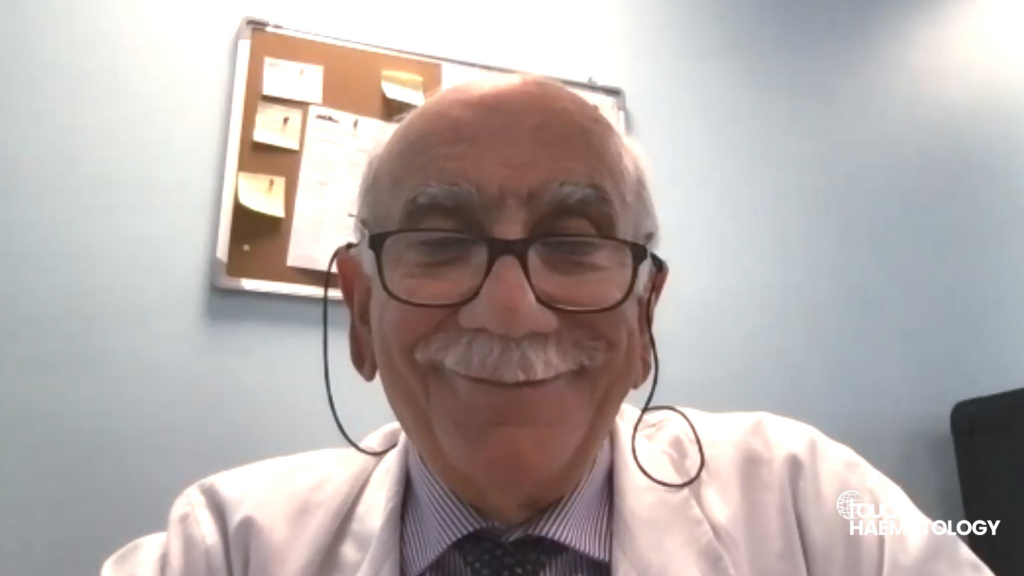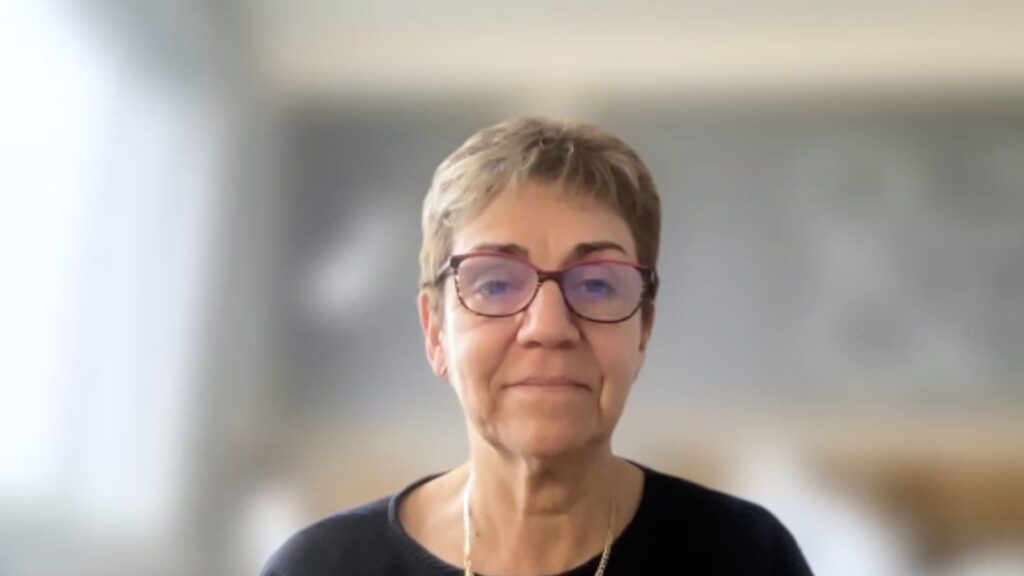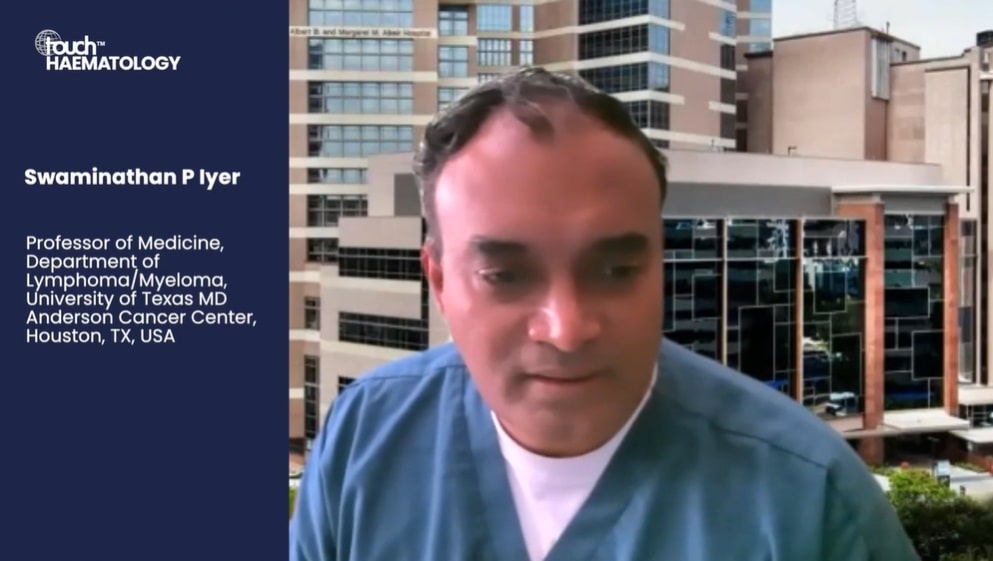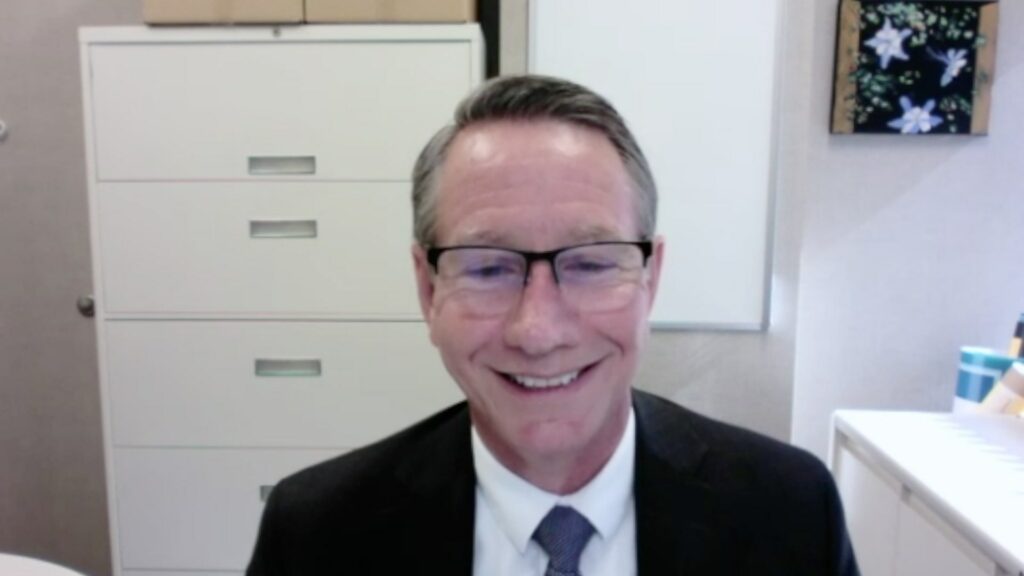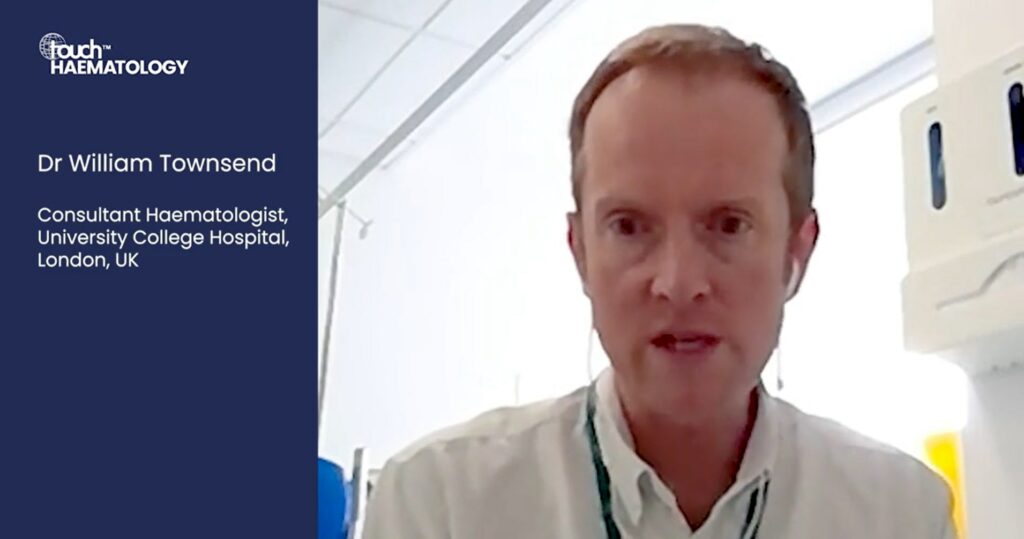CAR-T cell therapy and bispecifics in the treatment of lymphoma: Updates from ASH 2022
Prof. Swaminathan Iyer (University of Texas MD Anderson Cancer Center) reviews the latest data around CAR-T cell therapy and bispecific antibodies presented at ASH 2022.
Further information:
Abstract 655 entitled ‘Lisocabtagene Maraleucel (liso-cel) Versus Standard of Care (SOC) with Salvage Chemotherapy Followed By Autologous Stem Cell Transplantation (ASCT) As Second-Line (2L) Treatment in Patients with Relapsed or Refractory Large B-Cell Lymphoma (LBCL): Primary Analysis of the Randomized, Phase 3 Transform Study’ was presented at the ASH Annual Meeting, 10–13, December, 2022.
Research article entitled ‘Glofitamab for Relapsed or Refractory Diffuse Large B-Cell Lymphoma’ published: N Engl J Med 2022; 387:2220-2231.
Disclosures: Prof. Iyer has provided consultancy to Salarius Pharmaceuticals, Inc.
Support: Interview and filming supported by Touch Medical Media Ltd. Interview conducted by Nicola Cartridge.
Transcript:
Hello, everyone. I’m Swaminathan Iyer from M.D. Anderson Cancer center, so then move on to the area, ee are still in the area of car-t but then we have to think about what he has done to lymphoma. It has completely challenged the notion of autologous transplant, and it’s not only approving a third line, but also in the second line, especially with the two studies that TRANSFORM and the ZUMA-7, which showed that event-free survival is better for the CD19 CAR-T compared to standard of care, which included salvage chemotherapy, such as R-DHAP or R-ICE or GDP, followed by stem cell, high dose chemotherapy and stem cell rescue. The donor transplant, and although CAR-T have made a big impact there are patients, both in the second line and also the third line who do relapse. And some of these patients, especially in the relapse in the first three months, they do have very poor outcomes. And so the real world data out there have shown, both from US and Europe have shown that not all therapies are equal post-CAR-T. Perhaps the CD19 therapies are not always efficacious, but it seems that the obinutuzumab-based regimen combinations and also bispecific therapies, especially in clinical studies, have made a huge difference. If you recall many years ago, Dr. Schuster presented the plenary session of obinutuzumab in patients with relapsed/refractory lymphoma as about 30% of them were post CAR-T that had a response. So and that’s occurring along the same theme here that you see that bispecific would be a good opportunity to use for patients who fail CAR-Ts. But the big important question is, should bispecific be used after CAR-T or before CAR-T? And that’s an important question that’s been answered by sort of a more exciting and recent data and a different bispecific that have been tested and also have met your clinical data include glofitamab, epcoritamab, odronextamab, and plamotamab. If you look at just the, the, the glofitamab study, which is the bispecific with a CD20 and, and a hook for C3 and it’s been shown to have very good responses to diffuse large B-cell lymphoma. And one thing about glofitamab that is very interesting is that obinutuzumab that I mentioned is a 1 to 1 ratio of the target and the CD3 that it invokes and brings closer to the tumor cells. In glofitamab it is a ratio close to one, which means there are two CD20 for every CD3. So the engagement of the CD20 is much higher. And in fact the study that is presented and also had a New England Journal publication simultaneously in December showed very good responses and phase I glofitamab had to go through a steep learning curve because of the cytokine release syndrome that is seen with it. So one of the ways that this was mitigated was using obinutuzumab, which is anti-CD20 monoclonal antibody in day one and glofitamab was given in a step up, step up dosing 2.5 mg on day two to second week and then 10 mg on week three to stage 15 and then 30 mg from cycle two onwards for up to 12 cycles. With this, the rates of CRS was much lower and also the grade 1 and grade 2 to about 10% And the grade 3’s were in the single digits. And more importantly, the overall response rate was about 52% The primary hypothesis that these patients would achieve a rate of 35% and the profiles rate was about 36% at the time of presentation, much higher in the New England Journal. I think the PFS was closer to 40%. So it’s pretty efficacious to consider bispecifics and especially in patients who post-CAR-T their response rates, also seen in about 35 to 37%. And so the big question is how to sequence the bispecific sequences to CD19 to look at the targets you have. You use reduction upfront and sometimes other antibody drug conjugates, but you have the CD19. You have the CAR-Ts. And then you have the CD20, CD3 bispecifics. So it remains to be seen how these are sequenced. But definitely it’s an option for patients who cannot get the CAR-T, who don’t have the time to have the cells collected, and especially in some rural areas and some community setting. But the caveat is there’s a huge learning curve. I think people in the community have to consider that this drug needs a more careful consideration. The FDA is very likely going to have REMS program for this. And the first cycle always has to be in patient. It has to be a consideration for use of xx and other medications going to reduce the incidence of CRS. So it’s still very efficacious, but still some learning curves, especially with glofitamab,aAnd I think all the other data that you see epcoritamab, odronextamab,and plamotamab are also very exciting. It looks like we will, if not by the end of the year, but early next year we will have at least two to four bispecific as options for patients with diffuse large B-cell lymphoma.


